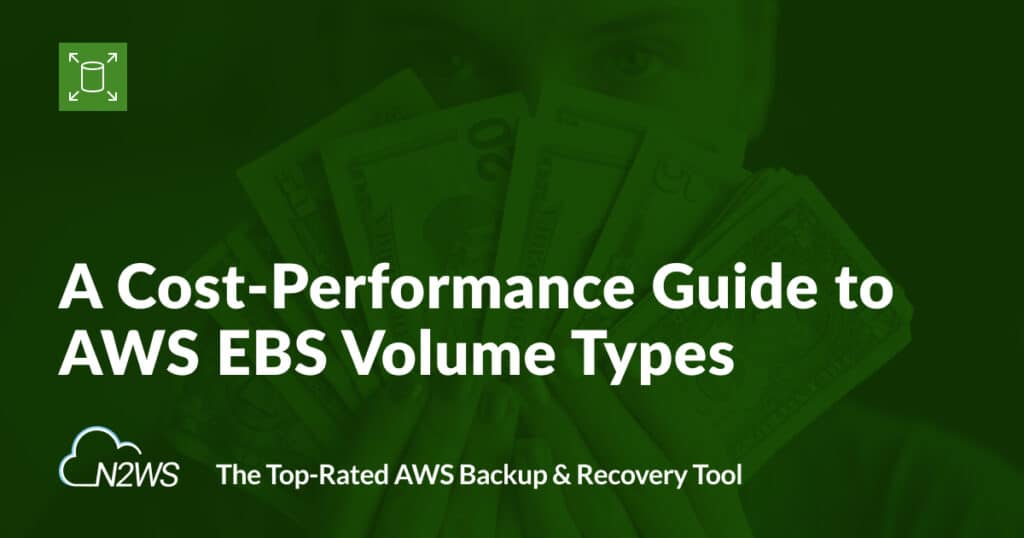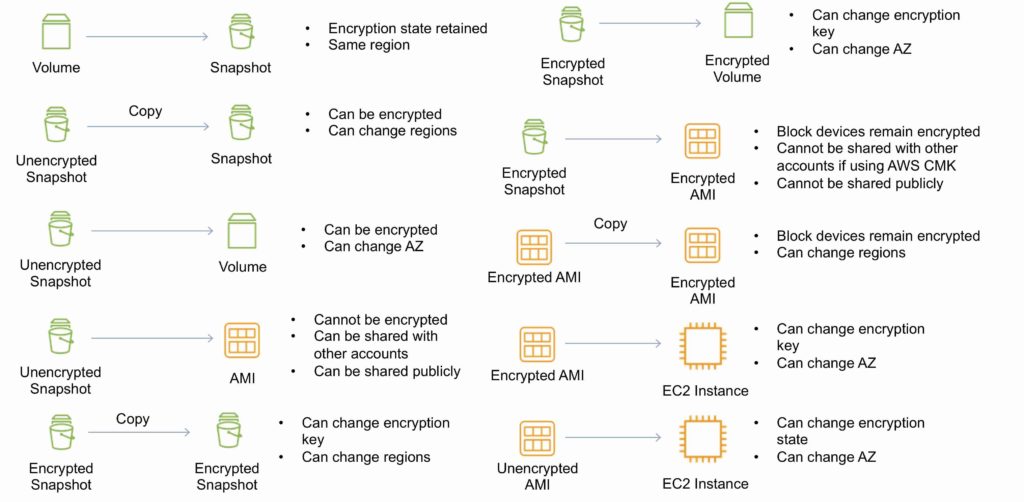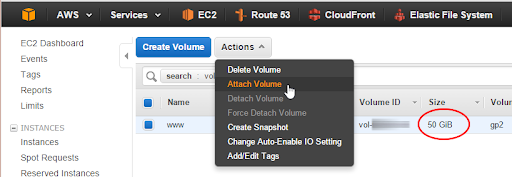Amazon EBS: A Deep Dive into Elastic Block Storage
Understanding Amazon EBS
Amazon EBS (Elastic Block Storage) is a block storage service offered by Amazon Web Services (AWS). It’s a crucial component of AWS’s Infrastructure as a Service (IaaS) offering, allowing users to store data for EC2 (Elastic Compute Cloud) instances. Amazon EBS volumes offer a reliable way for applications to access data persistently. Think of Amazon EBS as a hard drive that’s specifically designed for use with AWS services. This provides users with a fundamental understanding of persistent storage for applications running in the cloud, essential for various workloads, including databases, file systems, and data warehousing.
Amazon EBS volumes are a core element in building scalable and robust applications on the cloud. Users can leverage the service’s features for data storage on virtual machines, providing crucial persistent storage for applications to access and store data. Amazon EBS is integral to many use cases on AWS, enabling seamless data management and ensuring consistent application performance. Understanding the nuances of Amazon EBS is critical to efficiently deploying and managing applications within the AWS ecosystem. A core advantage of Amazon EBS is its versatility in supporting numerous applications and use cases. Its scalability and reliability are key benefits, making it a top choice for users seeking a cost-effective, performant, and versatile storage option. This service’s versatility, combined with its seamless integration with other AWS services, significantly enhances the overall value proposition of AWS.
Amazon EBS offers various features that make it a versatile solution for storing and managing data. Users can leverage the service’s features for storage, facilitating data persistence, and ensuring consistent application access. The various storage types available in Amazon EBS help optimize performance and cost. Understanding these options is crucial for selecting the right storage type for specific applications. The wide range of storage options available through Amazon EBS allows for an optimal choice of storage type that best meets the needs of each application.
Choosing the Right Amazon EBS Volume Type
Selecting the appropriate Amazon EBS volume type is critical for optimizing performance and minimizing costs. Different volume types cater to varying performance needs and price points. Understanding these distinctions is vital for effective Amazon EBS management. Choosing the correct volume type directly impacts application scalability and project budgets.
Amazon EBS offers various volume types, each with distinct performance characteristics and pricing structures. Standard volumes provide a balance of performance and cost. Provisioned IOPS volumes offer predictable I/O performance, ideal for applications with consistent I/O demands. gp2 volumes are a general-purpose option, suitable for many workloads. io1 volumes excel in demanding I/O-intensive situations. sc1 volumes deliver high throughput and low latency for specific use cases. Carefully evaluating your workload requirements is paramount when selecting the best volume type. Factors such as I/O patterns, data access frequency, and anticipated growth all play a key role in optimal amazon ebs selection.
Consider the price-performance trade-offs. While provisioned IOPS volumes might provide superior performance, they come at a higher cost. Choosing the right volume type requires careful analysis. The cost savings from using a less expensive type could outweigh any performance implications for certain amazon ebs projects. Analyzing your application’s unique characteristics is crucial in the selection process. Amazon EBS offers cost-effective solutions without sacrificing performance. Employing appropriate strategies helps you leverage the right type of storage for your specific workload needs, effectively managing Amazon EBS costs and ensuring the optimal balance between performance and budgets.
Optimizing Amazon EBS Performance
Optimizing Amazon EBS performance involves careful selection of volume type, size, IOPS, and placement. Choosing the ideal EBS volume type directly impacts the final cost of a project. Avoid over-provisioning; understand how the chosen volume type directly affects application scalability. Selecting the correct volume type for the specific workload is crucial for maintaining optimal performance and cost-effectiveness. Understanding the correlation between performance and cost is vital for effective project management.
Several factors influence Amazon EBS performance. Volume size impacts read/write operations. Higher IOPS (Input/Output Operations Per Second) support more concurrent requests, while throughput affects the volume of data moved per second. Strategic placement of EBS volumes near the instances using them can improve latency and speed up access. By considering the balance of performance needs and cost, organizations can use amazon EBS resources efficiently, leading to optimized results. Precisely determining the performance requirements of applications is essential for optimal Amazon EBS selection.
Efficient use of Amazon EBS requires careful consideration of volume size, IOPS, throughput, and placement. The selection of the optimal EBS type directly affects the cost of the project and the scalability of applications. Understanding the interplay between performance and cost is vital for effective project management. Monitoring performance metrics allows for early detection of bottlenecks and ensures cost optimization. A crucial aspect of Amazon EBS optimization is avoiding over-provisioning. This minimizes wasted resources and promotes efficient use of the service.
Managing Amazon EBS Snapshots
Amazon EBS snapshots are vital for data protection and recovery. They act as point-in-time backups of your Amazon EBS volumes. Leveraging these snapshots enhances the speed and efficiency of backups and restores, often resulting in cost savings compared to traditional backup methods. Snapshots are fundamental to disaster recovery strategies for Amazon EBS.
Regularly creating snapshots of your Amazon EBS volumes ensures data redundancy. This allows quick recovery in case of data loss or system failure. Using snapshots streamlines recovery procedures, improving operational efficiency. Automated snapshotting schedules further simplify this process, ensuring consistent backups. This automation is crucial for maintaining a robust backup strategy and avoiding potential data loss. For Amazon EBS, choosing the right snapshot strategy is essential for effective data protection and maintaining business continuity. Proper use of Amazon EBS snapshots and scheduled automated backups are cornerstones of data integrity and security.
The use of snapshots enhances disaster recovery. They are critical for restoring lost data or recovering from system failures. Amazon EBS snapshots enable rapid restoration of your volumes to a previous state, enabling quick business resumption. Implementing robust backup and recovery plans for your Amazon EBS volumes is prudent, ensuring minimal disruption from unexpected events. By utilizing snapshots, organizations can protect critical data and maintain business continuity. Efficient snapshot management is key to leveraging the full potential of Amazon EBS and mitigating potential risks from data loss. By regularly scheduling snapshots, businesses can protect their Amazon EBS data effectively and reduce potential downtime from system failures.
How to Use Amazon EBS for Disaster Recovery
Implementing effective disaster recovery strategies is crucial for any application reliant on Amazon EBS. A robust backup and restoration plan minimizes data loss in the event of an outage. This comprehensive approach to data protection leverages Amazon EBS snapshots for a swift and secure recovery process. Understanding the nuances of disaster recovery ensures business continuity and data integrity. Amazon EBS snapshots are critical to this process.
Establishing a strong backup and restoration plan is paramount. Regular snapshots of Amazon EBS volumes provide a point-in-time copy of the data. Using this backup, a recovery plan can be established for the restoration of the data. Different approaches to disaster recovery have varying security, speed, and cost considerations. A hybrid approach that combines automatic snapshots with manual intervention provides the flexibility required for most applications. Implementing automated procedures for snapshot creation and recovery significantly enhances security and efficiency. This strategy minimizes downtime and data loss, crucial elements for any business environment.
The restoration process from Amazon EBS snapshots is straightforward. After an outage, initiating the recovery process can be carried out using the stored snapshots. Restoring from these snapshots depends on the recovery strategy. Choosing the correct recovery approach ensures that the desired level of data integrity and speed is maintained. Evaluating the security implications and associated costs associated with each approach is essential to choosing the right recovery strategy. This meticulous planning ensures the continued operation and integrity of the system in disaster scenarios. The use of Amazon EBS snapshots simplifies the process of disaster recovery, ensuring business continuity.
Best Practices for Amazon EBS
Implementing best practices for Amazon EBS is crucial for optimizing performance, minimizing costs, and ensuring data integrity. Proper volume management, effective snapshot scheduling, appropriate volume type selection, and performance monitoring are fundamental aspects of responsible Amazon EBS administration. Choosing the correct Amazon EBS volume type is pivotal. Selecting the optimal type directly impacts project costs. Over-provisioning can lead to unnecessary expenses. Strategic allocation is vital to maintain cost-effectiveness and scalability.
Efficient snapshot scheduling is essential for data protection and recovery. Establishing a regular schedule ensures consistent backups, safeguarding against data loss. Automated snapshotting processes save valuable time and effort. A well-defined recovery plan utilizing these snapshots simplifies restoration procedures. The correct scheduling frequency depends on the data’s criticality. For example, frequent backups for frequently modified data are necessary. Regularly backing up frequently changing data ensures quicker recovery. Amazon EBS offers a robust framework for efficient data protection. Implementing these best practices optimizes Amazon EBS usage. Consistent monitoring of key performance indicators is important.
Monitoring performance metrics, including volume I/O, latency, and throughput, allows for proactive capacity planning and cost optimization. Analyzing these metrics helps identify potential bottlenecks and areas for improvement. Detecting performance issues early enables immediate adjustments to avoid service interruptions. Proactive management of Amazon EBS volumes is essential. Consistent monitoring and analysis help identify trends, which facilitates informed decisions. Amazon EBS offers comprehensive tools to support these tasks.
Security Considerations for Amazon EBS
Ensuring the security of data stored on Amazon EBS is paramount. Implementing robust security measures is crucial for safeguarding sensitive information. Amazon EBS offers several security features designed to protect data. Proper configuration of access controls, encryption, and network security is essential for securing Amazon EBS volumes. Consider implementing encryption at rest and in transit to protect data stored on the EBS volumes. This practice mitigates the risk of unauthorized access. Implementing strong access controls is critical for limiting access to only authorized users and applications. Use IAM (Identity and Access Management) policies to manage user access to specific Amazon EBS volumes. This approach ensures that only authorized personnel can access and modify data stored on the volumes. Strict network security protocols prevent unauthorized access from external sources. Secure network configurations protect the data stored within Amazon EBS volumes.
Data encryption safeguards sensitive information stored on Amazon EBS volumes. Protecting data against unauthorized access is essential. Implementing encryption ensures that even if a volume is compromised, the data remains protected. Implementing encryption protects data during transmission and storage. This ensures that Amazon EBS maintains a high level of security. Ensure encryption is utilized to secure data at rest and in transit. This practice safeguards sensitive information stored on Amazon EBS. Implementing strict access controls limits access to authorized personnel, reducing risks of data breaches and unauthorized access. Use IAM policies to configure permissions for different user groups. This measure protects Amazon EBS volumes. Secure networks prevent unauthorized access from external sources. This strategy safeguards sensitive information stored on Amazon EBS volumes.
Mitigating potential risks is crucial for maintaining data integrity and confidentiality. Implementing these security measures is essential for safeguarding data stored on Amazon EBS volumes. These practices safeguard Amazon EBS users from potential security threats. Utilizing these security measures enhances the overall security posture. Adhering to Amazon EBS security best practices ensures that data remains protected. Integrating these security measures into broader AWS security best practices strengthens the overall security architecture for your applications. Integrating security practices into your Amazon EBS strategy improves the protection of your data. Amazon EBS security is fundamental to ensuring data integrity and confidentiality. These considerations apply to a wide variety of applications using Amazon EBS.
Practical Amazon EBS Use Cases
Numerous use cases leverage Amazon EBS. A web application deployment benefits from the flexible storage solutions of Amazon EBS. The scalability of Amazon EBS allows for easy adjustment to fluctuating demands. Choosing the right Amazon EBS volume type ensures that storage performance matches application needs.
Database hosting is another key use case for Amazon EBS. The fast performance of provisioned IOPS volumes can handle high database transaction rates. Databases require consistent and predictable performance. Amazon EBS provides reliable storage for critical database operations. Amazon EBS is a crucial part of a well-functioning database system. The appropriate volume type directly impacts the speed and cost effectiveness of a database implementation.
Beyond these core examples, Amazon EBS finds applications in various areas. This storage solution is essential for virtual machine (VM) environments. It facilitates efficient storage and retrieval of VM data. Amazon EBS’s flexibility and performance contribute greatly to virtualized environments. This versatile storage option is ideal for data warehousing and analytics. The high-throughput capabilities of certain Amazon EBS volume types accelerate complex data processing. Choosing the optimal volume type is critical to ensure the efficiency of analytics applications. Proper selection minimizes costs while maximizing performance. Understanding these attributes of Amazon EBS is vital for efficient project management.



